An aluminum building facade is a modern architectural solution that combines strength, light weight, and stylish design. Aluminium facades are widely used in commercial buildings, offices, shopping centers, and residential towers. They not only protect the building from weather but also improve energy efficiency and give a clean, modern look.
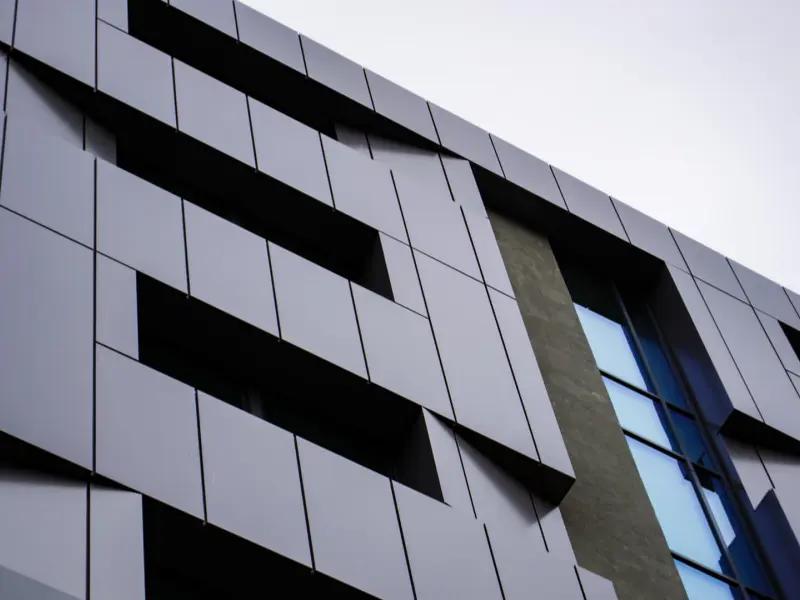
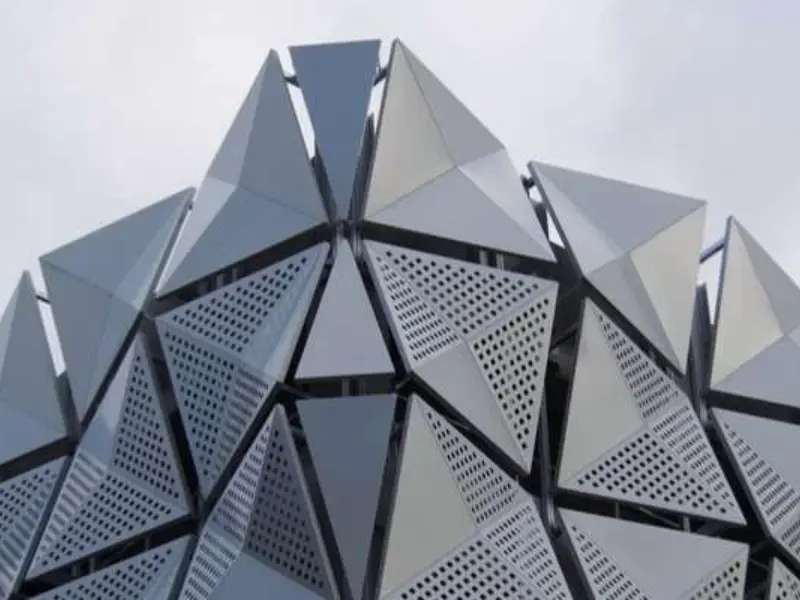
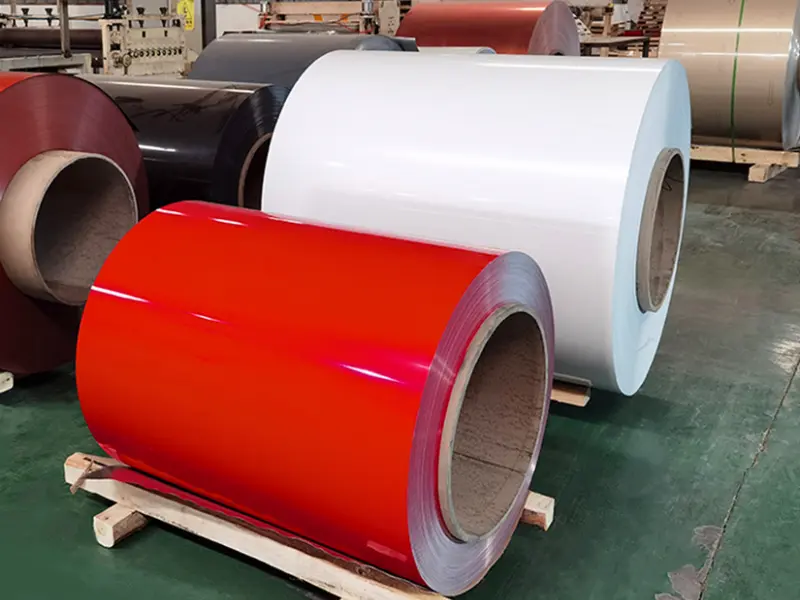
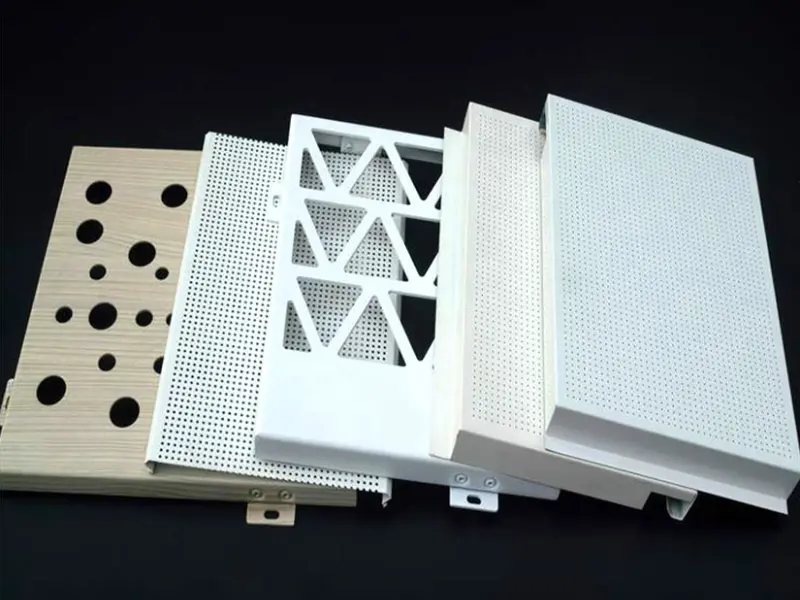
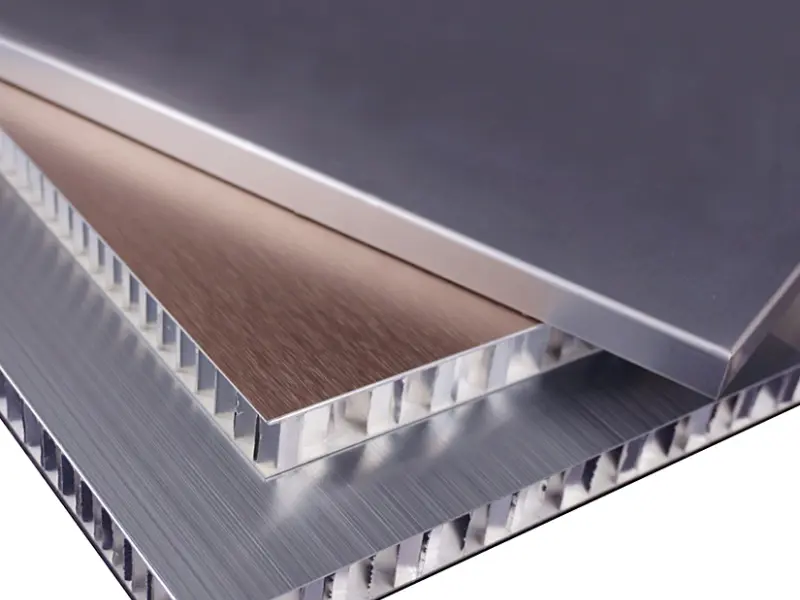
Classification of Aluminium Building Facade
| Classification | Features | Common Uses |
|---|---|---|
| Solid Aluminium Panels | Flat surface, strong structure | Exterior walls, commercial buildings |
| Aluminium Composite Panels (ACP) | Two aluminium sheets with plastic core | Office facades, shopping malls |
| Perforated Aluminium Panels | Decorative holes, ventilation-friendly | Sunshades, ceilings, design facades |
| Curtain Wall Aluminium Facade | Large glass-aluminium frame systems | Skyscrapers, airports, hotels |
| Honeycomb Aluminium Panels | Sandwich structure, lightweight, very flat | High-rise buildings, interior walls |
Thickness Options
Aluminum facade panels come in different thicknesses depending on design and strength needs.
| Thickness (mm) | Weight (kg/m²) | Application Example |
|---|---|---|
| 2.0 – 3.0 mm | 5.4 – 8.1 | Interior walls, small facades |
| 4.0 mm | 10.8 | Standard building facades |
| 5.0 – 6.0 mm | 13.5 – 16.2 | High-rise building exteriors |
| 8.0 mm + | 21.6 + | Special projects requiring extra strength |
Alloy Options
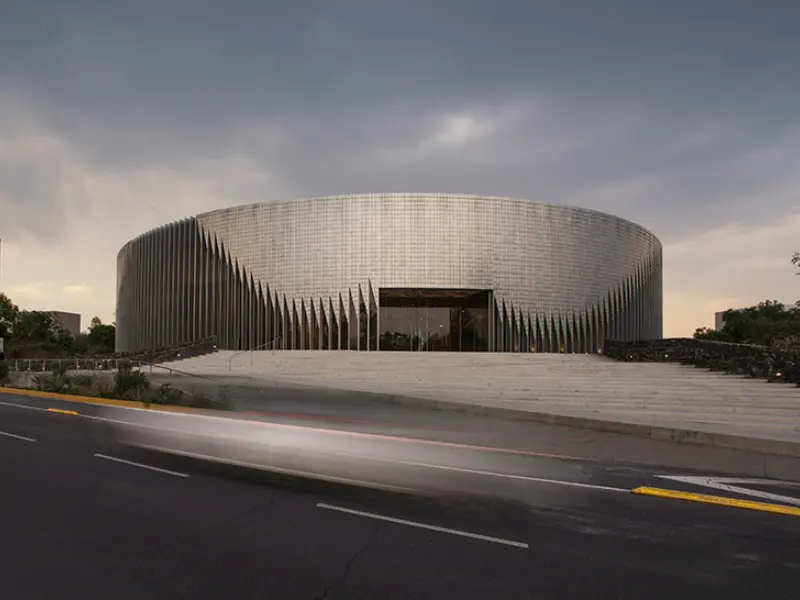
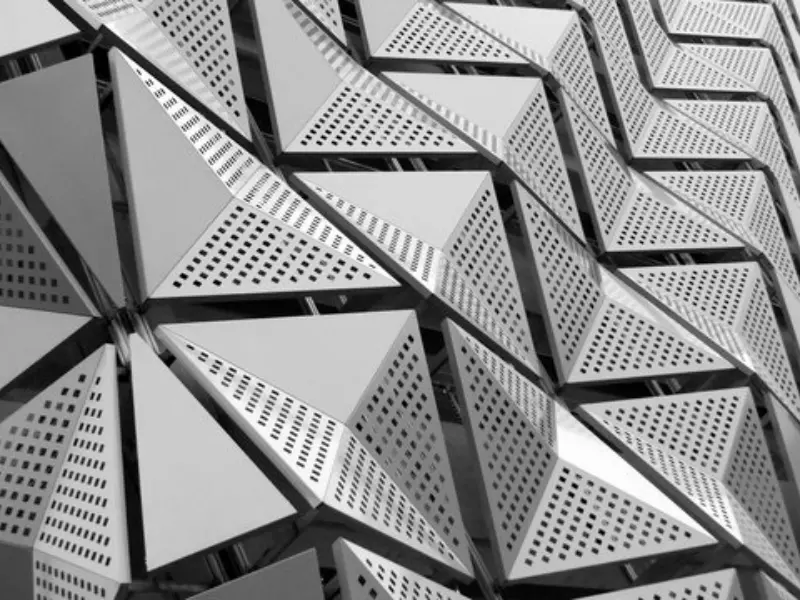
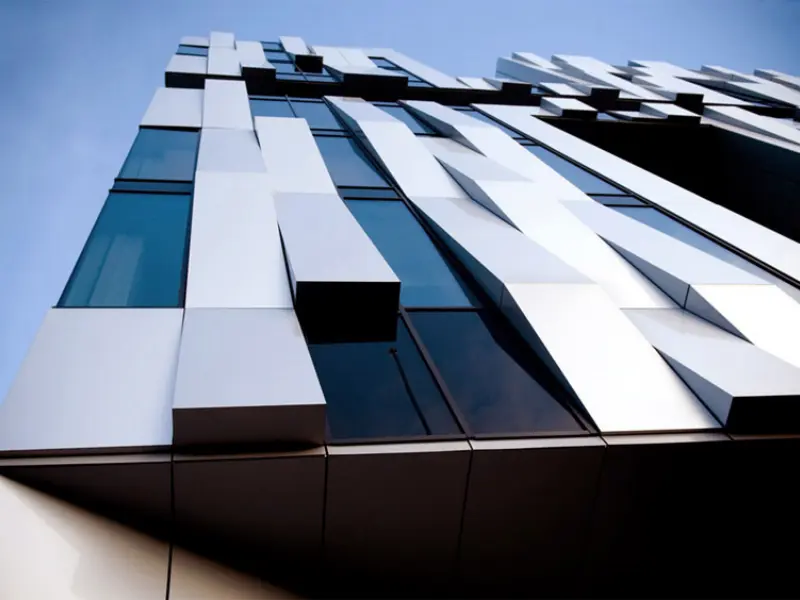
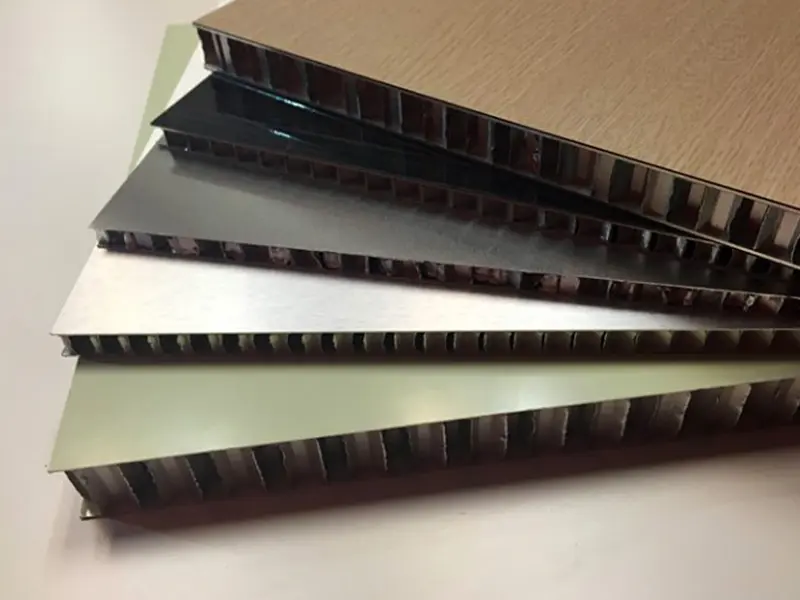
The choice of alloy affects the strength, corrosion resistance, and performance of aluminium building facades.
| Alloy | Features | Typical Applications |
|---|---|---|
| 1100 | High corrosion resistance, low strength | Decoration, low-load facades |
| 3003 | Better strength, good corrosion resistance | Commercial facades, roofing |
| 5052 | High corrosion resistance, marine grade | Coastal buildings, exterior cladding |
| 6061 | Excellent strength and machinability | Structural facades, curtain walls |
Packaging of Aluminum Building Facade
To ensure safe delivery, aluminum building facade panels are packed carefully.
- Protective film to avoid scratches.
- Moisture-proof kraft paper for humidity protection.
- Wooden pallet or wooden box for strong support.
- Steel straps to secure during transport.
| Packaging Type | Description |
|---|---|
| Standard Export Pack | Film + kraft paper + wooden pallet |
| Customized Packaging | Made according to customer request |
| Shipping Options | Sea freight, air freight, or land transport |
Why Choose Aluminum Building Facade?
1. Lightweight and Strong
- Much lighter than stone or steel.
- Reduces structural load on buildings.
2. Long Durability
- Resistant to corrosion, UV rays, and rain.
- Lifespan of more than 20–25 years with minimal maintenance.
3. Modern Aesthetic
- Smooth, flat surfaces for a clean look.
- Can be painted, anodized, or powder-coated in many colors.
4. Energy Efficiency
- Works as insulation, reducing heating and cooling costs.
- Can include perforated panels for natural ventilation.
5. Fire and Safety Performance
- Non-combustible materials, meeting safety standards.
Applications of Aluminum Building Facade
Aluminium facades are widely used in architecture and design.
Commercial Buildings
- Office towers
- Shopping centers
- Exhibition halls
- Hotels
Residential Buildings
- Apartment complexes
- Private villas
- High-rise housing projects
Public Projects
- Airports
- Train stations
- Government buildings
- Hospitals
Decorative and Functional Uses
- Sunshades
- Balcony cladding
- Interior wall panels
- Acoustic panels
Advantages at a Glance
| Feature | Benefit |
|---|---|
| Lightweight | Easier handling and lower building load |
| Weather resistant | Suitable for all climates |
| Design flexibility | Many colors, textures, and patterns |
| High flatness | Ideal for large wall surfaces |
| Long lifespan | Durable with low maintenance |
| Eco-friendly | Recyclable aluminium supports green building |
Common Aluminium Building Facade Panel Specifications
Here’s a comparison of typical aluminium building facade panel specifications, highlighting the numerical values that differentiate types and help in selection:
| Feature | ACP Facade Panel (4mm) | Solid Aluminium Facade Panel (3mm) | Perforated Aluminium Facade Panel (3mm) |
|---|---|---|---|
| Classification | Aluminium Composite Panel (ACP) | Solid Aluminium Panel | Perforated Aluminium Panel |
| Total Thickness | 4mm (e.g., 0.5mm Al skin / 3mm core / 0.5mm Al skin) | 3mm (solid sheet) | 3mm (solid sheet) |
| Alloy Type | 3003 H14 (skins), LDPE/FR core | 3003 H14 or 5052 H32 | 3003 H14 or 5052 H32 |
| Panel Flatness | Excellent | Very Good | Good (depends on perforation pattern) |
| Standard Width | 1220mm, 1250mm, 1500mm | 1000mm, 1220mm, 1500mm | 1000mm, 1220mm |
| Standard Length | Up to 5800mm (or custom up to 6000mm) | Up to 4000mm (or custom up to 6000mm) | Up to 3000mm |
| Approx. Weight (kg/sqm) | 5.5 – 6.5 kg/sqm | 8.1 kg/sqm | 4.0 – 7.0 kg/sqm (varies significantly by open area %) |
| Fire Rating | B1 (FR core), A2 (Mineral Core) | A1 (Non-combustible) | A1 (Non-combustible) |
| Surface Finish Options | PVDF, PE, Anodized, Wood/Stone Look, Mirror | PVDF, Anodized, Powder Coated, Mill Finish | Powder Coated (most common), Anodized, Mill Finish |
| Typical Use | General exterior cladding, fascias, interior panels | Premium exterior cladding, complex shapes, high-traffic areas | Sunscreens, ventilation, decorative facades, acoustic panels |
Installation and Maintenance of Aluminium Facades
The installation of an aluminium building facade requires specialized expertise to ensure proper alignment, sealing, and structural integration. Various mounting systems are available, including cassette systems, hook-on systems, and panel-and-frame systems, each suited to different facade types and building requirements. Proper planning for thermal expansion and contraction is essential for longevity.
Maintenance is straightforward. The high-quality coatings typically used on aluminium facade panels (like PVDF) are designed to be durable and resistant to fading and dirt. Routine cleaning with mild soap and water is usually sufficient to maintain the aesthetic appeal and performance of the facade for decades. Avoid harsh abrasive cleaners that could damage the finish.
Why an Aluminium Building Facade is the Modern Choice
In summary, the aluminium building facade is a leading solution for contemporary construction, offering an unbeatable combination of form and function. Its lightweight yet strong nature, exceptional corrosion resistance, and vast design possibilities make it the material of choice for architects and developers globally. With a variety of classifications, precise thickness options, high-performance alloys, and careful packaging, aluminium facade systems provide a durable, energy-efficient, and visually stunning exterior for any building.